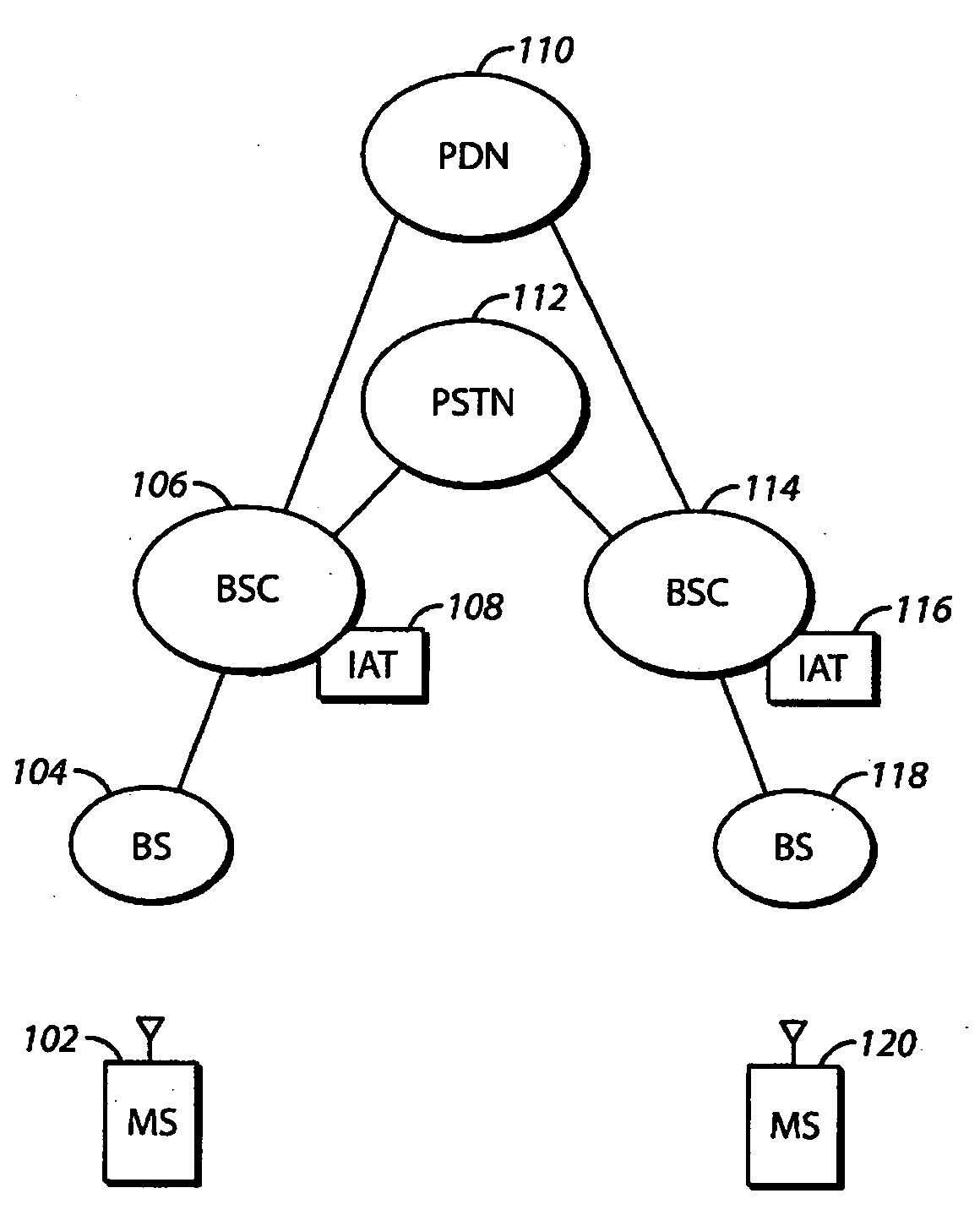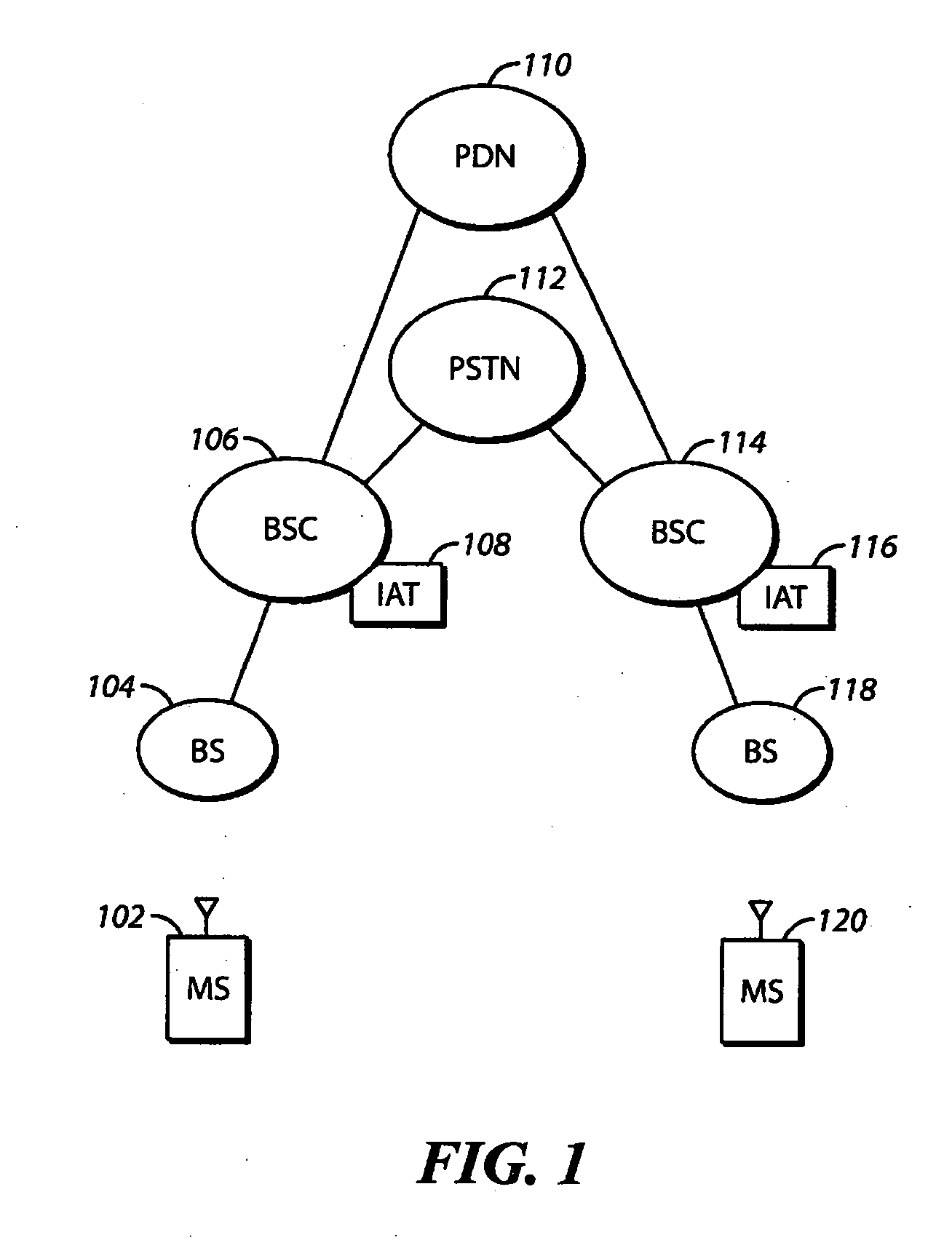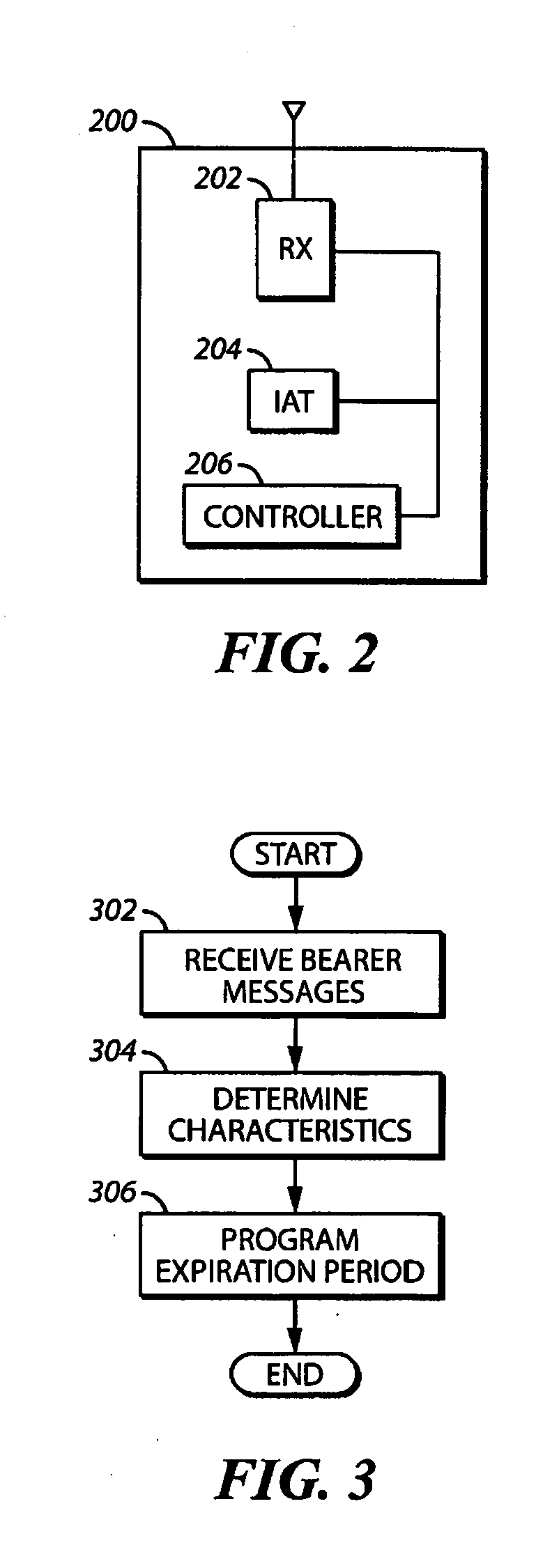System and method for programming an inactivity timer
a timer and inactivity technology, applied in the direction of network topologies, messaging/mailboxes/announcements, broadcast service distribution, etc., can solve the problems of different types of system costs, inefficient resource allocation, and long time-consuming
- Summary
- Abstract
- Description
- Claims
- Application Information
AI Technical Summary
Benefits of technology
Problems solved by technology
Method used
Image
Examples
Embodiment Construction
[0010] A system and method for setting the inactivity timer in a mobile communication system determines the expiration period of the timer by examining the characteristics of messages that are exchanged within the system. The approaches described herein conserve battery power of mobile stations and result in the efficient allocation of system resources.
[0011] In many of these embodiments, one or more characteristics of a PTT bearer message exchange between an originating mobile station and a target mobile station is determined. The bearer message may be part of a private call or, alternatively, a group call. An expiration period of the inactivity timer is programmed based upon the one or more characteristics of the PTT bearer message exchange. The characteristic may be the direction of a bearer message in the bearer message exchange, the relative direction between subsequent user bearer messages in message exchange, the number of bearer messages in the call, the duration and length...
PUM
 Login to View More
Login to View More Abstract
Description
Claims
Application Information
 Login to View More
Login to View More - R&D
- Intellectual Property
- Life Sciences
- Materials
- Tech Scout
- Unparalleled Data Quality
- Higher Quality Content
- 60% Fewer Hallucinations
Browse by: Latest US Patents, China's latest patents, Technical Efficacy Thesaurus, Application Domain, Technology Topic, Popular Technical Reports.
© 2025 PatSnap. All rights reserved.Legal|Privacy policy|Modern Slavery Act Transparency Statement|Sitemap|About US| Contact US: help@patsnap.com



